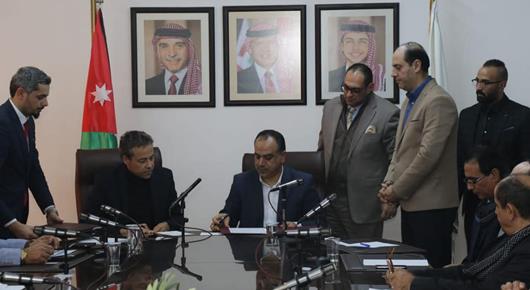FOA supports “Aquaponics” production systems to save water in Jordan

Amman - January 8, 2020 – The Food and Agriculture Organization of the United Nations (FAO) has signed an agreement with the Ministry of Agriculture (MoA) to provide capacity building and technical support for the Integrated Agri-Aquaculture (IAA) farming systems in water-strapped Jordan.
The joint project falls within FAO’s regional initiatives on water scarcity and encouraging small-scale family farming across the Near East and North Africa.
The Technical Cooperation Project (TCP) was signed on Tuesday by FAO Representative Ad-Interim in Jordan Alexis Bonte and Minister of Agriculture Ibrahim Shahahdeh, toward the “Introduction of Aquaponics and Hydroponics in Support of Effective Use of Water”.
The project is designed to train 60 unemployed agricultural engineer graduates and farmers, in addition to setting up a knowledge base and research on “Hydroponics and Aquaponics” farming units at one of the Ministry’s centers.
Bonte explains that the technical cooperation project is designed “to promote a new idea and bring technology to Jordan as one of the main challenges here is water scarcity.” The agreement is also set to “further contribute to increase the water efficiency in Jordan through the integrated agri-aquaculture farming systems,” he explains.
H.E Engineer Ibrahim Shahahdeh says: “This agreement falls within the Ministry's priorities in activating projects with direct impact on the farmer, the society and on the crops development”.
Jordan’s 2025 Vision, among others, aims to improve national water security and agricultural productivity. The 2016-2025 water strategy is based on integrated water resource management approach. Jordan Economic Growth Plan (2018-2022) acknowledges the need for capitalizing on new agricultural technologies such as hydroponic systems in the enhancement of the efficiency of agriculture sector in Jordan.
The Agricultural sector consumes more than half of the total water supply in the country, listed as one of the three poorest states in water resources.
